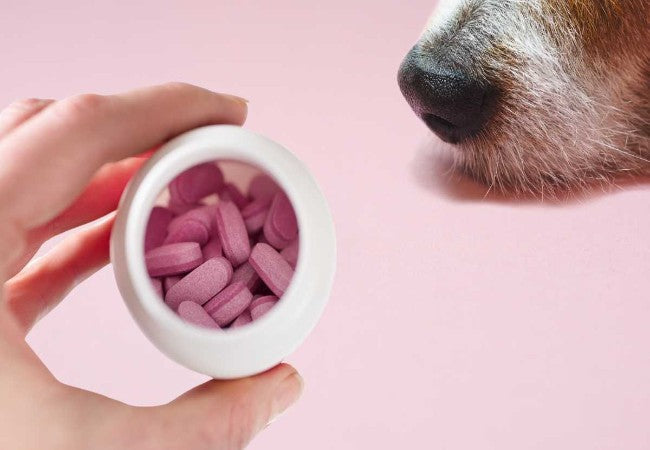Giving Benadryl to Dogs in 2025: Vet‑Reviewed Safety, Dosage & Precautions 🐶💊

In this article
Giving Benadryl to Dogs in 2025: Vet‑Reviewed Safety, Dosage & Precautions 🐶💊
By Dr. Duncan Houston BVSc
🧠 Overview & When to Use
Benadryl® (diphenhydramine) is an over-the-counter antihistamine commonly used off-label in dogs for mild allergic reactions, motion sickness, or bee stings. It’s not a replacement for professional veterinary allergy treatments.
📏 Dosage Guidelines
The standard dose is:
- 1 mg per pound of body weight (2–4 mg/kg), given every 8–12 hours—up to three times daily.
For example, a 20 lb dog would receive a 20 mg tablet, twice to three times daily. Use formulations without alcohol, xylitol, or acetaminophen.
⚠️ Side Effects & Safety Risks
- Common: Sedation, dry mouth, urinary retention, constipation.
- Less common: Vomiting, diarrhea, increased heart rate or, paradoxically, hyperactivity.
- Overdose risks: Extreme CNS changes (agitation or depression), tremors, seizures—requires immediate veterinary care.
🛑 When to Be Cautious
Benadryl may worsen certain conditions. Talk to your vet before giving it to dogs with:
- Cardiac or lung disease, glaucoma, urinary retention, seizure disorders, liver issues, and pregnancy.
Always confirm that the product is free from harmful additives like alcohol, xylitol, and decongestants.
🩺 When Benadryl Helps—and When It Doesn’t
- Effective for sudden allergic reactions (hives, insect bites), mild itch, or motion sickness.
- Less effective for chronic skin allergies or behavioral anxiety—vet-guided alternatives (Apoquel, Cytopoint, prescription sedatives) may be better.
👌 Safe Use Tips
- Check the ingredient label to ensure only diphenhydramine is present.
- Use split tablets or children’s liquid (12.5 mg/5 mL) for accurate dosing in small dogs.
- Observe the dog closely for two hours after giving Benadryl and adjust if side effects appear.
🔚 Final Thoughts
Benadryl can be a safe, useful tool for mild or emergency needs—but only if dosed correctly and used in appropriate situations. Always consult your vet for recurring issues, chronic allergies, or if your dog has preexisting conditions. When used wisely, it’s a reliable first-aid aid in the allergy toolbox 🐾.






